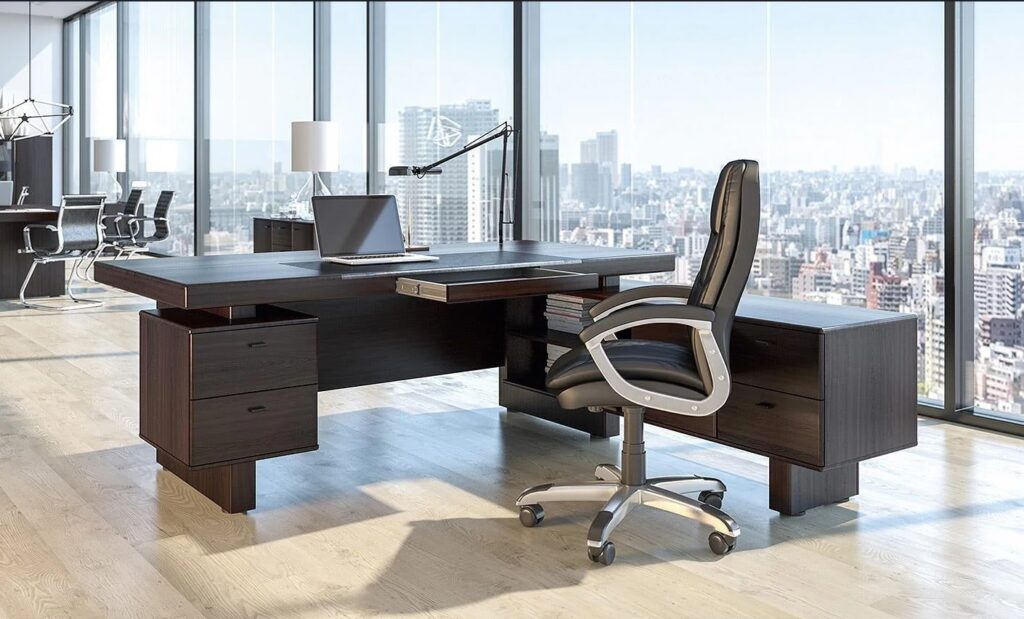Creating a productive workspace is an art and a science. Be it building a home office or just redoing the professional workspace, the desk and office chairs are paired to be a seat of the right combination. Setting up such a system is capable of improving the quality of focus, comfort, and maximum efficiency during working hours. This guide will take you through the important factors to consider when pairing desks and office chairs in a workspace to ensure functionality and style.
The Conception of Importance in Desks and Office Chairs
Your desk and office chair would be the centres of the workspace. Incidentally, they will facilitate the posture, accessibility of the tools, and total comfort that a person may experience during prolonged working hours. An ill-chosen pairing could result in discomfort, fatigue, and even chronic health injuries, while the right match helps create a healthy and ergonomic environment that promotes productivity.
A Right Desk Depending on Your Needs
Purpose of the Desk: The type of work you do should determine the kind of desk you need. If your job happens mostly on a machine that requires that apparatus and cables be managed without too much intrusion into space for monitors or keyboards, this is flexible. Still, most people need a larger desk with more storage options for designing or crafting.
-
Consider the Size of Your Workspace:
Measure your workspace carefully to determine the desk size that fits without overwhelming the room. Compact desks work well in smaller spaces, while executive desks can be great for larger areas.
-
Focus on Ergonomics:
The desk height should complement your chair to ensure proper posture. Standard desks are typically 28 to 30 inches tall, which suits most users, but adjustable-height desks allow you to work while standing or sitting, promoting better health.
Selecting the Perfect Office Chair
-
Prioritise Ergonomic Features:
An office chair should support your natural posture and minimise strain on your back, neck, and shoulders. Look for features like adjustable seat height, lumbar support, and armrests. A chair with a tilting mechanism allows you to shift positions throughout the day, reducing fatigue.
-
Choose the Right Material:
Office chairs are available in various materials, including mesh, leather, and fabric. Mesh chairs are breathable and ideal for warmer climates, while leather offers a professional aesthetic. Fabric chairs strike a balance between comfort and durability.
-
Mobility and Swivel Features:
Opt for a chair with wheels and a swivel base if your work requires frequent movement. These features improve accessibility and reduce strain when reaching for items across the desk or workspace.
Ensuring a Perfect Match Between Desks and Office Chairs
-
Align Heights for Comfort:
The height of your desk and chair should align to ensure your arms rest comfortably on the desk without hunching your shoulders. Ideally, your elbows should be at a 90-degree angle when typing or writing.
-
Maintain Adequate Legroom:
Ensure the desk allows ample space for your legs and the chair to slide under. A cramped setup can lead to discomfort and restricted movement.
-
Create a Cohesive Style:
While functionality is critical, aesthetics also matter. Pair a modern desk with a sleek office chair for a contemporary look, or choose wooden desks and chairs for a traditional touch. Matching finishes and complementary colours can enhance the visual appeal of your workspace.
Enhancing Productivity with Additional Features
-
Storage Solutions:
Desks with built-in drawers or shelves help organise your workspace and reduce distractions. Pair them with a minimalist office chair to avoid overcrowding the area.
-
Lighting Considerations:
Place your desk near a natural light source or use task lighting to reduce eye strain. Adjustable desk lamps can be an excellent addition to a well-lit workspace.
-
Personalisation for Comfort:
To further enhance comfort, add ergonomic accessories like footrests or wrist pads. Decorative items like desk organisers, plants, or framed photos can make the space more inviting and personalised.
The Importance of Testing Before You Buy
Whenever possible, test the desk and office chair before committing to a purchase. Sit at the desk and chair combination to ensure they feel comfortable and meet your ergonomic needs. Pay attention to details like the desk’s sturdiness and the chair’s adjustability.
Budget-Friendly Tips
Creating a productive workspace doesn’t have to break the bank. Here are some cost-effective ideas:
- Prospective desks and chairs that serve more than one versatile function.
- Adjustable furniture for all of the transition in the future.
- Buy during a sales season or an online sale to get a good product and good budget.
Adaptability to New Requirements
Your workspace needs will probably change, so you will surely want to purchase something flexible. These include adjustable desks and chairs, movable modular storage, and layouts that can be changed without a complete overhaul.
Conclusion
The pairing of desk and office chairs is more than a functional choice; it is an investment in the productive use of human capital, health, and well-being. Ergonomics and form, complemented by utility, give birth to a workspace that inspires the worker in what he does daily while sustaining him much longer than anyone could think. Whether it is a build or rework from the start of an office, careful planning, detail, and attention absolutely make a difference.

I am Naomi Sarah. Recently I have completed my graduation from North university. In this blog, I write an article about Instagram Captions and Quotes.
